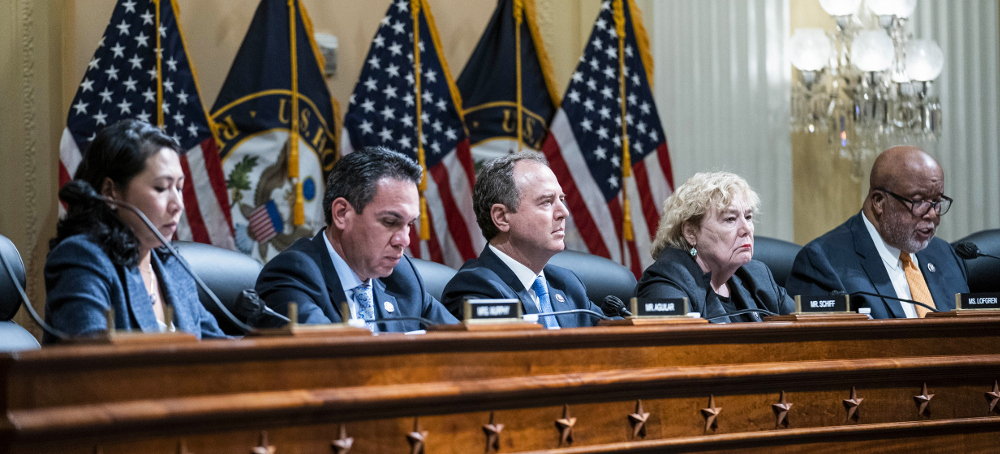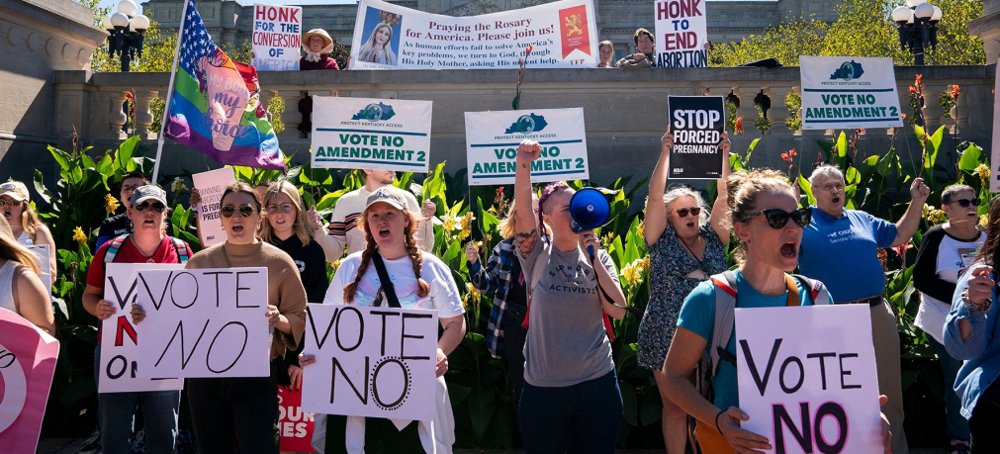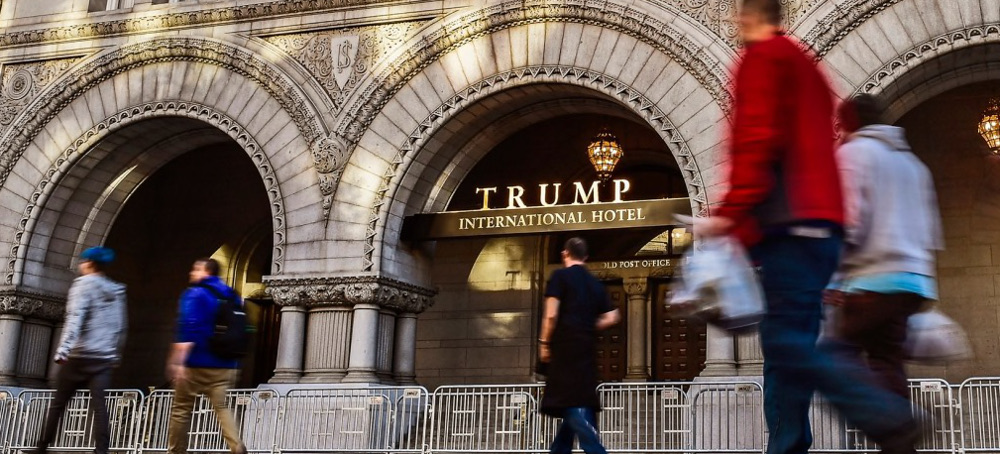Live on the homepage now!
Reader Supported News
There are a number of incredible coincidences that led to the former president getting his preferred judge.
Those incredible coincidences have led lawyers and legal experts to suggest that something may not be above board with how Trump’s team filed their lawsuit, which serendipitously ended up in the MAGA-friendly hands of Judge Aileen Cannon.
For one, Trump’s team blamed a “technical issue” with the court’s computer system. But The Daily Beast has discovered that the system was working just fine for dozens of other lawyers making hundreds of filings that day.
For another, lawyers typically file lawsuits at the district where an issue took place. Trump’s lawyers filed at a courthouse in a neighboring division.
And third, lawyers will mark a case as “related” when it deals with a similar matter. Trump’s legal team did not—despite the fact that another magistrate judge at the right courthouse had approved the FBI’s search warrant to recover those classified government documents from Mar-a-Lago.
“It’s clearly related. I don’t think there’s a plausible argument that it’s not related… it was related to another case in the district—in the same courthouse as a matter of fact,” said Carl Tobias, a law school professor at the University of Richmond.
Questions continue to swirl over how exactly Trump managed to get Cannon, who has shocked legal scholars by issuing mind-boggling orders that always favor Trump. She has temporarily halted the FBI investigation, appointed a “special master” to slow down the probe, and kept the case far from its natural home in Washington, D.C.
“It was basically a home run to get her,” said Loyola Law School professor Jessica Levinson. “They clearly made the correct calculation, because Judge Cannon’s rulings legally don’t make sense. They only make sense if you’re trying to help the former president.”
Levinson said Trump’s team was clearly “judge shopping.”
“They did not want the magistrate judge to make this decision,” she said. “There was already a captain of this ship. They just didn’t like the direction this was taking.”
Trump’s lawyers filed in one division, Fort Lauderdale, selected the venue in a second division, West Palm Beach, and got a judge in a third division, Fort Pierce. And the way Trump handled this matter was odd from the start.
On Aug. 8, the FBI raided Trump’s oceanside estate in Palm Beach. But he did nothing to intervene or legally protest the search over the following two weeks—inaction that surprised two lawyers who have done significant work for Trump or his associates, who told The Daily Beast about their frustration.
It wasn’t until Aug. 22 that Trump finally sued the government to assert his rights were being violated—at a courthouse an hour’s drive south of Mar-a-Lago. A relatively new addition to the former president’s ever expanding cadre of lawyers, the 33-year-old Lindsey Halligan, went in person to the Fort Lauderdale courthouse near her listed address to submit a copy of the 27-page lawsuit, according to a receipt of the transaction. West Palm Beach was selected as the proper venue. The clerks entered the document into the court system at 4:50 p.m.
The move was so peculiar that Trump’s legal team had to explain themselves, which they did in an official document electronically signed by Halligan, Washington lawyer James M. Trusty, and Baltimore attorney M. Evan Corcoran.
“A technical issue with access to the Court’s CM/ECF system precluded electronic filing today, and the CM/ECF Help Desk advised undersigned counsel to file conventionally,” they attested.
To fact-check that, The Daily Beast examined timestamps for all 1,370 court filings made in the Southern District of Florida that day and interviewed lawyers who used the system throughout the afternoon.
Five lawyers who filed documents in the district that day told The Daily Beast that the court’s electronic system was working fine and some even provided receipts that showed their electronic filings were submitted successfully. The district’s head clerk, attorney Angela E. Noble, also confirmed that her court experienced no technical difficulties that day.
Court docket timestamps provide further proof. A lawsuit against a pizzeria was filed electronically at 4:08 p.m. Pissed-off restaurant employees sued their boss over missing tips at 4:14 p.m. A cruise line got sued three minutes later at 4:17 p.m. And the system was still working at 4:43 p.m., just three minutes before Trump’s lawyers filed their lawsuit, when a woman sued over the way she tripped on a pallet at a Costco aisle.
The system was up and running afterwards too, when a food producer sued French businessmen at 5:10 p.m.
When South Florida lawyers who regularly practice in this district were told about Trump’s in-person filing—and the excuse that the system wasn’t working—they all responded with disbelief.
"I don’t know anybody who files in person. I didn’t even know you could do that anymore. It looks like this person was trying to select a particular judge,” one said, suggesting that a Trump lawyer may have had sway with a court employee.
"I find it bizarre. The only people who file in person are ‘pro se,’” said another, referring to people who sue on their own without the help of a lawyer.
“People don’t do this anymore. It’s extremely odd. I guess you could do this if you wanted to get a particular judge—or avoid getting a particular judge,” speculated a third.
For weeks on social media, legal scholars and paid news commentators have been wondering the same thing—and openly suggesting that Trump’s legal team figured out how to game the system.
“Could the 4th estate PLEASE get to the bottom of this,” tweeted former DOJ prosecutor Andrew Weissmann. “If there wasn’t at least the potential to judge shop why on g_d’s green earth would Trump have gone all the way to her district to file and do so physically, when he could have electronically filed at the court in his backyard?”
Lawyers spoke on background, citing a concern that they may have future cases assigned to Judge Cannon.
Some lawyers raised the possibility that Trump’s lawyers tried to be deliberately vague when they blamed “a technical issue with access to the court's” system, which could technically mean they couldn’t get their own computers to work.
“It lacks the ambiance of candor,” one lawyer said. “What do you mean by technical issue? Are you saying the court system was down? Or your computer was down?”
Trump’s own lawyers seem to disprove that notion. In court documents, Halligan attested that she was able to send a copy of the lawsuit “via electronic mail” that day to two Department of Justice lawyers: top Miami federal prosecutor Juan Antonio Gonzalez and Jay I. Bratt, chief of the DOJ National Security Division’s counterintelligence and export control section.
Halligan did not respond to questions for this story.
Trump’s lawyers’ claim that the system wasn’t working makes even less sense when you consider that they could have filed sooner or even later.
“There was nothing that imposed a deadline on them to file. They could have done it the next day,” one South Florida lawyer said.
“I think somebody pulled a fast one in the clerk’s office to rotate it to a friendly judge. It doesn’t sound like it was done by the blind filing system,” mused another.
The Daily Beast contacted a court employee with direct knowledge of how the Trump lawsuit filing was handled, and this person said the case was placed into the federal court system’s automatic random judge “assignment wheel.”
Noble, the head of that office, also said that the proper procedure was followed on their end—and that this is backed up by a log that “is not publicly available.” She said the Trump lawsuit was placed on the West Palm Beach civil wheel, which consists of nine judges. Cannon is in a neighboring division, so she can occasionally get West Palm Beach cases.
Theoretically, that would give Trump a 1-in-9 chance of getting Cannon on the case.
However, The Daily Beast analyzed new case assignments in West Palm Beach in the week preceding Trump’s lawsuit and found that Cannon actually got a much higher share, nine of the 29 new complaints—roughly a third of all cases.
But the system still appears random. The previous Friday in West Palm Beach, Cannon got the first lawsuit of the day. Judge Donald M. Middlebrooks got the next three. Cannon got the last one.
On Monday, Aug. 22, in West Palm Beach, Cannon got the first case. Trump’s lawsuit was the second of the day in that division, and she got that too.
A head clerk of federal courts in another state told The Daily Beast that lawyers sometimes time filings as if they’re players at a casino. Sometimes it works.
“If you play cards and count the cards, I suppose they could say, ‘I’ll hold this here until I see if other judges got assignments.’ But it would be very risky because it’s random,” she said.
READ MORE By ranting on Truth Social, it sure seems like the former president undermined one of his main defenses in a defamation case over an alleged sexual assault, legal experts say. (photo: Christopher Aluka Berry/Reuters)
By ranting on Truth Social, it sure seems like the former president undermined one of his main defenses in a defamation case over an alleged sexual assault, legal experts say. (photo: Christopher Aluka Berry/Reuters)
By ranting on Truth Social, it sure seems like the former president undermined one of his main defenses in a defamation case over an alleged sexual assault, legal experts say.
That’s because the move appears to have blown a new hole in Trump’s best defense against the magazine columnist’s lawsuit, in which Carroll accuses Trump of defamation by denying her accusation that he raped her in a New York department store over two decades ago.
Trump’s lawyers have argued for months that he can’t be held personally responsible in the suit because his denial took place during his presidency, and therefore fell under his official duties as president. But by repeating his denial last week in an online tirade posted on his social media site, Truth Social, and blasted out in an emailed statement, Trump essentially re-upped the activity at the heart of the lawsuit—at a moment when he’s not the president anymore.
In other words, Trump may have just kicked the legs out from under one of his strongest legal defenses, according to Barbara McQuade, who previously served as Detroit’s top federal prosecutor.
“She [Carroll] should amend her complaint to include an additional count based on the new statement,” McQuade told VICE News. “Because Trump is no longer president, this statement was most certainly not made in the scope of his federal employment.”
Carroll accused Trump in 2019 of raping her in the dressing room of New York’s Bergdorf Goodman department store in the mid-1990s. Trump then accused Carroll of “totally lying” while trying to sell a book, adding: “She’s not my type.” Trump’s denial prompted Carroll to launch her lawsuit accusing Trump of defaming her.
A court in Washington D.C. is now weighing whether Trump’s denial took place in the context of his role as a federal employee. If the court rules that it did, then the United States would become the defendant in the lawsuit—and that would effectively make the lawsuit disappear, because the U.S. federal government cannot be sued for defamation.
“We are confident that the D.C. Court of Appeals will find that our client was acting within the scope of his employment when properly repudiating Ms. Carroll’s allegations,” Trump’s attorney, Alina Habba, recently told the New York Times.
Last week, while that case is still pending, a New York judge ordered Trump to sit for a deposition on Wednesday, Oct. 19. That order touched off Trump’s latest tirade, in which he branded the lawsuit a “complete con job” and launched fresh attacks against Carroll.
Trump acknowledged that he wasn’t “supposed to” repeat what he said about Carroll, but then went on to repeat it anyway.
“It is a Hoax and a lie, just like all the other Hoaxes that have been played on me for the past seven years,” Trump wrote. “And, while I am not supposed to say it, I will. This woman is not my type!”
McQuade isn’t the only lawyer who thinks Trump stepped on a rake by re-upping his claims after his presidency.
Longtime Trump critic and conservative lawyer George Conway also noted that Trump’s statement was probably ill-advised.
Conway castigated Trump on Twitter last week for issuing “a BRAND NEW statement REPEATING all the earlier defamatory statements, but since you're no longer POTUS, you NO LONGER HAVE THAT DEFENSE you've been pushing for years that you made the statements while you were president!!!”
A spokesperson for the law firm representing Carroll declined to comment.
“The latest statement from Donald Trump obviously does not merit a response,” the spokesperson for the firm, Kaplan Hecker & Fink, told VICE News.
 Rep. Adam Schiff, D-CA, center, listens during a business meeting of the House Jan. 6 committee on Oct. 19. (photo: Sarah Silbiger/Bloomberg)
Rep. Adam Schiff, D-CA, center, listens during a business meeting of the House Jan. 6 committee on Oct. 19. (photo: Sarah Silbiger/Bloomberg)
Katyal — a law professor and an Obama-era acting solicitor general — made an appearance on NBC on Sunday, three days after the House panel investigating January 6, 2021, unanimously voted to subpoena Trump. The subpoena will compel the former president to cooperate with the committee or be held in contempt of Congress and referred to the Justice Department for prosecution — much like Trump's allies Steve Bannon and Peter Navarro.
In response to the decision, Trump sent a document to the panel that started with the sentence, "THE PRESIDENTIAL ELECTION OF 2020 WAS RIGGED AND STOLEN!" and contained multiple baseless claims of election fraud. It also included four photos of the crowd near the Washington Monument on January 6, 2021.
"Yeah, so, this is a 14-page screed, Jonathan, that's very hard to follow. But it does seem to dig the hole in deeper for Donald Trump," Katyal told the MSNBC host Jonathan Capehart.
"I can't see it in any legal way helping him unless he is trying to go for the insanity defense, of which this paper seems, you know, to be some evidence of," Katyal added.
Katyal also said he thought it was a "pretty fanciful" idea that Trump would just give in and testify to the panel because of the congressional subpoena.
"I mean, this is a man who took the Fifth Amendment more than 400 times the last time he was questioned under oath. And I doubt he's suddenly become eager to testify," Katyal said.
Katyal was referencing Trump's deposition in August during New York Attorney General Letitia James' investigation into the Trump Organization's business practices, during which he pleaded the Fifth more than 440 times and answered only a question about what his name was.
Katyal added that he thought Attorney General Merrick Garland would indict Trump, as there's overwhelming evidence to do so and "no contrition whatsoever" on Trump's part.
A representative at Trump's postpresidential press office did not immediately respond to a request for comment.
READ MORE Demonstrators rally on the steps of the Kentucky State Capitol in Frankfort, Kentucky, October 1, 2022. (photo: Stefani Reynolds/AFP)
Demonstrators rally on the steps of the Kentucky State Capitol in Frankfort, Kentucky, October 1, 2022. (photo: Stefani Reynolds/AFP)
Women in Mitch McConnell's home state are fed up and feeling the effects of the Supreme Court's hard right turn
Last week, Riley co-hosted a fundraiser for Protect Kentucky Access, the coalition working to defeat a ballot initiative, like the one recently voted down in Kansas, that would strip the right to abortion from Kentucky’s constitution. “I’m stunned that we even have to have this conversation again,” Riley says of abortion rights. “It’s really mind-blowing.”
Protect Kentucky Access is marshaling supporters like Riley, who identifies as an independent, as they make the argument that the ballot initiative will usher in a dangerous, dystopian reality for women across the commonwealth. In some ways, it has been easier for organizers to make that argument in Kentucky than it was in Kansas, because in Kentucky abortion is already illegal.
“We are hearing, all across the state, that people are being taken right up to the line of sepsis for miscarriage care, or pharmacists are afraid to provide any medication that is included in a medication abortion regimen,” says Tamarra Wieder, director of Planned Parenthood Alliance Advocates of Kentucky. “The chilling effect has been profound here in Kentucky.”
When the Supreme Court struck down federal protections for abortion in June, Kentucky became one of the first states where abortion was outlawed, thanks to a trigger law designed to take effect instantaneously. Medical providers have filed a legal challenge against both the trigger ban and a six-week abortion ban, but Kentucky’s Supreme Court will not hear arguments until after voters weigh in on amendment 2 — and only if the amendment is defeated.
“We know that if this amendment passes there is no legal pathway to challenge any of these restrictions, and they become permanent,” Rachel Sweet, the campaign director for Protect Kentucky Access, says. For the last two years, Sweet was the director for Kansans for Constitutional Freedom, the group that organized against that state’s anti-abortion amendment; last month, she relocated to Kentucky to try to replicate their success.
Sweet sees an advantage in the state’s voter rolls: unlike Kansas, where registered Republicans outnumbered registered Democrats by a margin of roughly two-to-one, in Kentucky, voter registrations for Republicans and Democrats are closer to equal.
Both campaigns for and against the Kansas amendment were well-organized and well-funded, but in Kentucky, the political coalition Sweet inherited — of national partners like the ACLU and Planned Parenthood, along with local groups like Sister Song, Kentucky Health Justice Network, and Granny’s Birth Initiative — is out-raising its opponent significantly.
Protect Kentucky Access has raked in $2.7 million so far, five times more than its rival, Yes for Life. The vast majority of the $510,000 Yes for Life has raised to date has come from the Kentucky Baptist Convention. The Family Foundation Of Kentucky and the Catholic Conference of Kentucky have also made large contributions, but the campaign’s financial disclosures show surprisingly few small-dollar donations from individual supporters.
“There’s a lot of assumptions that Kentucky is pro-life based on our legislature,” Wieder says. But Democrats actually held a majority in the state house in Kentucky up until 2017 — the year Donald Trump was sworn into office. It was only at the start of that legislative cycle, Wieder says, “when we saw this onslaught of anti-abortion bills.”
Those new laws are now complicating the administration of health care in a state where it was already hard to access in many places: More than half the counties in the commonwealth do not have a practicing OB-GYN, 40 percent do not have a pediatrician.
Today, Wieder says, doctors are being forced to devise contingency plans with their pregnant patients for they can get get care, in case of miscarriage or medical complications. “Conversations about having a backup doctor in Illinois, or ‘Can you get to Indiana?’ …even if [patients] aren’t seeking abortion care, but they need a plan B for anything that may arise in their pregnancy.”
Dismantling Kentucky’s anti-abortion infrastructure will start with defeating the amendment, but it is not the only race advocates are concerned about this November. Joseph Fischer, a Republican state representative and the architect of both the trigger ban and the legislation that put amendment 2 on the ballot while in the Kentucky House, is now vying for a seat on the state’s supreme court. If elected to the position, he could wield even greater power to influence the administration of the state’s abortion laws. “I believe we’re going to win in November on the amendment,” Wieder says, “But if we have extremists like Jeff Fischer on the Supreme Court, we’re in trouble long term.”
Riley is likewise optimistic that voters in Kentucky will see the amendment for what it is: “another showing of the Republicans in Frankfort doing a power grab.” And even in Mitch McConnell’s home state, she says, “I feel like the overreach from the Supreme Court that’s trickled down has just been enough for people.”
More and more, she says, she’s hearing from “college friends and even family members who are just like, ‘This is crazy. This is just not what the government needs to be doing.’”
 Six workers were fired after a South Carolina store manager told police one employee had assaulted her and others refused to 'let her leave until they got a raise.' (photo: Kerry Taylor)
Six workers were fired after a South Carolina store manager told police one employee had assaulted her and others refused to 'let her leave until they got a raise.' (photo: Kerry Taylor)
ALSO SEE: Amazon Workers Vote
Against Unionizing at Upstate NY Warehouse
Six workers were fired after a South Carolina store manager told police one employee had assaulted her and others refused to “let her leave until they got a raise.”
The suit, filed on behalf of eight workers at a Starbucks in Anderson, South Carolina, concerns an incident from Aug 1. That day, workers at the store performed a “march on the boss,” a federally protected action in which workers present their boss with a series of demands related to working conditions.
“We are not going to move until some action is taken for our raise. No work is being done on the floor, and no customers are being served,” one worker told the store’s manager, Melissa Morris, in audio published by More Perfect Union on Twitter. Video of the incident was also released by the union, Starbucks Workers United.
The store manager, Morris, is shown on the video speaking to someone on the phone before asking workers if she can leave the store. “Yes,” worker Neil Tripathi replies.
Two days later, Morris filed a police report accusing the workers of kidnapping, telling cops they “would not let her leave until they got a raise” and that one worker “assaulted” her.
The Anderson County Sheriff’s office questioned workers about the incident, but no charges were filed. Nonetheless, Starbucks suspended 11 workers at the store. In a statement posted to its website, Starbucks said that the store manager “felt threatened and unsafe as the result of conduct by 11 store partners.”
Now, workers, including Tripathi, claim this statement defamed them by insinuating that they “had engaged in criminal activity.” The suit also suggests that Morris, the store manager, made a false police report “in apparent coordination with Starbucks upper management and its counsel.”
In a statement to The Daily Beast, Starbucks said they were reviewing the suit and “look forward to defending the company against the allegations made.” The company also denied retaliating against workers for union involvement.
“No Starbucks partner has been or will be disciplined for supporting or engaging in lawful union activity—but interest in a union does not exempt partners from following policies and procedures that apply to all partners,” the company told The Daily Beast.
Starbucks has engaged high-powered union-busting law firm Littler Mendelsohn to help them fight a wave of organizing at stores across the country. The battle has been ugly, with Starbucks so far firing 129 workers involved in organizing, according to the union. A month after suspending workers at the Anderson store, Starbucks fired six of them permanently.
The union has filed 364 charges against the company with the National Labor Relations Board, alleging unfair practices.
But the suit filed by baristas from South Carolina is the first lawsuit filed by the campaign.
“These workers were called criminals by their manager and by this company, and it was completely unfounded,” said Casey Moore, a member of Starbucks Workers United’s communication committee, “These charges are just holding the company accountable for their actions in whatever way we can.”
Moore says Starbucks has been waging war against the union effort on multiple fronts, firing workers and breaking labor law. The kidnapping charge was just another example of these retaliatory actions, she says.
“It shows the company’s willingness or desire to crush our union in any way that they can,” Moore says.
 Trump International Hotel in Washington in 2016. (photo: Bill O'Leary/The Washington Post)
Trump International Hotel in Washington in 2016. (photo: Bill O'Leary/The Washington Post)
Documents obtained by Congress show the Secret Service was charged rates above the government rate at least 40 times from Jan. 20, 2017, to Sept. 15, 2021.
Beginning in January 2017 through Sept. 15, 2021, the Secret Service received at least 40 waivers to let it spend more than the recommended per diem rates to stay at Trump properties to protect Trump as a president and former president, and also to protect those around him, the investigation found.
In one ledger obtained by the Oversight Committee and published in the report, the Secret Service was charged $1,160 for a room at the Trump International Hotel in Washington, D.C. for agents protecting Eric Trump on March 8, 2017. The government rate for D.C. on that night was $242. On Nov. 8, 2017, another ledger shows that the Secret Service was charged $1,185 to lodge agents protecting Donald Trump Jr. The government rate was $201.
In a statement on behalf of the Trump Organization, Eric Trump said, "Any services rendered to the United States Secret Service or other government agencies at Trump owned properties were at their request and were either provided at cost, heavily discounted or for free. The company would have been substantially better off if hospitality services were sold to full-paying guests, however, the company did whatever it took to accommodate the agencies to ensure they were able to do their jobs at the highest levels — they are amazing men and women.”
The Secret Service said it would respond to the findings of the investigation in communications directly with the committee.
“The U.S. Secret Service has received a letter from the House Oversight Committee requesting information pertaining to protection-related hotel charges, and the agency will respond directly to the committee with the requested information,” said Secret Service spokesperson Steve Kopek.
Trump Organization properties overall charged the Secret Service more than $1.4 million for agents’ accommodations when traveling to protect former President Trump, according to figures first reported by The Washington Post.
But it was previously unknown that a single night’s stay for the agents could cost the government agency, and therefore taxpayers, as much as $1,185.
House Oversight Committee Chairwoman Carolyn Maloney detailed the new findings in a letter to Secret Service Director Kimberly Cheatle on Monday, noting that then-President Trump said federal employees traveling with him would be able to stay in his company’s properties for free or at cost.
“The exorbitant rates charged to the Secret Service and agents’ frequent stays at Trump-owned properties raise significant concerns about the former President’s self-dealing and may have resulted in a taxpayer-funded windfall for former President Trump’s struggling businesses,” Maloney said.
During his presidency, Trump visited his properties 547 times, including 145 visits to his Mar-a-Lago Club in Florida, the investigation found, citing a study by Citizens for Ethics and Responsibility in Washington. Agents were required to stay at Trump Organization properties in order to protect the president as well as other dignitaries and foreign leaders.
The per diem for Secret Service is usually based on a formula that accounts for the season and location, the committee said, and higher rates are generally scrutinized by the agency.
“The Secret Service received authorization for additional flexibility for expenses during protective missions, including per diem expenses above the government rate,” Maloney said in her letter to the Secret Service.
Maloney said the committee is continuing to seek a full account of Secret Service spending at Trump Organization properties and believes the figure may be larger than the $1.4 million previously reported.
 Today, the water that flows into the river after treatment at Philadelphia's wastewater treatment plants exceeds quality standards under the Clean Water Act. (photo: Kimberly Paynter/WHYY)
Today, the water that flows into the river after treatment at Philadelphia's wastewater treatment plants exceeds quality standards under the Clean Water Act. (photo: Kimberly Paynter/WHYY)
“We were getting no readings,” he said. “And so they said, ‘Somebody’s got to tell the professor the machine is broken.’ The machine wasn’t broken. There was no oxygen. How can you support an ecosystem where the amount of oxygen was too low to measure?”
The answer was: You couldn’t. The dead zone on the river ran from Philadelphia to about 25 miles down river in Marcus Hook, Pennsylvania. That made it impossible for migratory fish like shad to breed. They would die on their journey upstream before they could lay their eggs in the upper Delaware.
Once plentiful caviar and sturgeon also disappeared. Combined with losses of shad and other fisheries, that spelled the death of a regional industry once worth hundreds of millions of dollars.
But even for people who didn’t fish, Pepino said for decades, the river just wasn’t a place people wanted to be.
“You look out on the river today, it looks appealing. It did not look appealing in those days.”
The backbone of the nation’s current water quality regulations dates back to the early 1970s with the passage of laws like the Safe Drinking Water Act and the Clean Water Act. In today’s deregulatory climate, it’s helpful to take a look at what those regulations did and what challenges lie ahead for the Delaware Watershed.
The Clean Water Act worked to clean up major waterways from industrial pollutants and sewage in the ‘70s and ‘80s. Sewage treatment plants posed one of the greatest challenges to the health of the Delaware River at the time.
Philadelphia’s former water commissioner Deb McCarty says the CWA helped transform the Delaware River from a “stinky ugly mess” into a year-round attraction that hosts beer gardens, yoga classes, pleasure boats and is now lined with million-dollar houses.
McCarty says the federal government gave the city millions of dollars to modernize its three treatment plants.
“Just think about that,” she said, “$900 million dollars in the ‘70’s and early 80’s that’s a lot of money.”
It was a massive building project. But it didn’t happen overnight. The cartoon below shows how many new steps were added to sewage treatment as a result of the Clean Water Act.
Back before the 1970’s, treatment was pretty simple. Gravity separated the raw sewage. Solids or sludge settled to the bottom of a big tank while scum, which includes grease, rose to the top and got skimmed off.
At that time, the scum and the sludge, the most concentrated solid waste, went into nearby lagoons or was dumped out in the ocean. But the remaining liquid ended up in the Delaware River, untreated. The bacteria in the waste gobbled up all the river’s dissolved oxygen, leaving little for the fish to breathe.
To get the fish to return, the Clean Water Act ushered in an age of biological science to treat wastewater — using microbes and oxygen to eliminate the bacteria in a controlled setting.
Once the microbes eat the pollutants, any remaining solids settle out and are removed. Instead of going into lagoons, the solids are turned into fertilizer, or used to generate methane, which is used as a power source. After this stage, the remaining liquid waste looks like clear water.
Add in some chlorine, and the sewage water that typically goes into the Delaware River today is a lot cleaner than the Clean Water Act requires.
What is dissolved oxygen and why do we care?
Oxygen makes up about 20 percent of the air we breathe each day. Fish and aquatic life need oxygen as well, which is dissolved in water. The amount of oxygen each species needs varies. Coldwater fish such as trout and salmon need a lot, ideally about 6.5 milligrams per liter.
Carp are hardy, and although they prefer more, they could live with about 2 mg/l. Microbes, or bacteria, can live on less than that, and if it’s all gone, those microbes switch to consuming nitrate.
Prior to the Clean Water Act of 1972, parts of the Delaware River below Trenton were considered “dead zones.” There were no fish because discharges of organic materials from slaughterhouses and untreated sewage caused the oxygen levels to drop. Microbes and bacteria thrived on the organic material and as a result, consumed all the oxygen, leaving none for the fish.
One of the primary ways to measure the health of a waterway is to measure its dissolved oxygen. Researchers from the Delaware River Basin Commission have done that for decades and their data show that oxygen levels began to increase after cities like Philadelphia began treating its wastewater, getting rid of the organic material at the treatment plant using microbes and oxygen in a controlled environment.
Fishermen report seeing an increase in the number of fish caught in the 1980s.
Dissolved oxygen is naturally higher in wintertime because cooler water can hold more oxygen than warmer water. Aeration, both natural from wind and waterfalls, and man-made from dams, helps increase the dissolved oxygen in a river.
Saltwater also holds less oxygen.
Although the Clean Water Act helped raise the levels of dissolved oxygen in the Delaware River to the point where fish like shad and sturgeon have returned, there are dangers not addressed by the Clean Water Act.
Climate change presents a number of issues. Increased temperatures mean longer summers, and rivers that are expected to stay warmer. Rising sea levels mean the salt line could move further upstream in the Delaware River. And scientists have already seen an impact on wind speed, which is decreasing.
Danielle Kreeger is an ecologist and senior scientist with the Partnership for the Delaware Estuary. Kreeger says these are all cause for concern.
“Despite improvements because of the Clean Water Act to treat sewage and wastewater, we still are not done,” said Kreeger. “And these animals, which we’ve seen come back, like Shad, they’re still vulnerable to losses of oxygen in the future if we let our guard down.”
Follow us on facebook and twitter!
PO Box 2043 / Citrus Heights, CA 95611



No comments:
Post a Comment
Note: Only a member of this blog may post a comment.